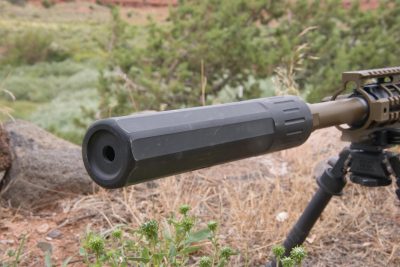 The Washington Post recently obtained an 11-page “white paper” written by the second-highest-ranking official at the Bureau of Alcohol, Tobacco, Firearms and Explosives (ATF) that proposes 15 policy changes, including the deregulation of suppressors and firearm imports, and a clarification of the infamous “arm-brace” rule.
The Washington Post recently obtained an 11-page “white paper” written by the second-highest-ranking official at the Bureau of Alcohol, Tobacco, Firearms and Explosives (ATF) that proposes 15 policy changes, including the deregulation of suppressors and firearm imports, and a clarification of the infamous “arm-brace” rule.
The author, ATF Associate Deputy Director Roland Turk, published the paper “to provide the new Administration and the Bureau multiple options… to reduce or modify [firearm] regulations.”
Taken as a whole, the list focuses on reducing paperwork, streamlining regulations, saving taxpayer dollars, and clarifying policies.
But gun enthusiasts are most excited about several of Turk’s individual proposals.
The rule change garnering the most attention calls for the redefinition of “silencers” to allow for easier access by consumers. Ultimately, Turk wants suppressors to be removed from the National Firearms Act, a 1934 law that imposed a $200 tax stamp and additional paperwork for any suppressor purchase.
“The change in public acceptance of silencers arguably indicates that the reason for their inclusion in the NFA is archaic and historical reluctance to removing them from the NFA should be reevaluated,” he says.
Turk notes that suppressors are rarely used in crimes and have become popular with hunters nationwide. He also admits that the eight-month wait time to process suppressor purchases has become “widely viewed by applicants and the industry as far too long, resulting in numerous complaints to Congress.”
The ATF cannot remove suppressors from the NFA by itself, but, according to Turk, it can revise the definition of “silencer” to include only those parts necessary for the suppressor’s operation. This would remove the NFA requirements from many individual suppressor parts, and only require a tax stamp for those parts that make the suppressor fully operational (see the first full paragraph on page 7).
Turk’s second significant change would loosen the restrictions on the importation of modern sporting rifles (MSRs) like AR-15s and AK-47s. Turk notes that these firearms are already widely available in the United States, so restricting their importation serves “questionable public safety interests” and imposes a heavy workload on the ATF.
Turk proposes that the agency revisit its almost 20-year old Sporting Purpose Study to “bring it up to date with the sport shooting landscape of today.” Modern sporting rifles are used by thousands of shooters in competitions and hunting trips every year. Admitting that MSRs are commonly used for sporting purposes could significantly decrease the import restrictions imposed under the Gun Control Act of 1968.
Another proposed change to import requirements would allow old U.S. military rifles like the M1 Garand and Carbine to be reintroduced to the U.S. public. Turk notes that there are many such rifles awaiting importation, but they have been denied importation and sale rights due to unreasonable “public safety concerns” from previous administrations.
Another change Turk suggests would allow a firearm user to shoulder a pistol without re-classifying that weapon as a “short barreled rifle.” The current rule states that if a user installs an arm brace or stabilizing brace on a pistol-length MSR, that pistol does not constitute a short-barreled rifle (which are regulated under the NFA). But as soon as that shooter uses the arm brace like a stock, the firearm changes classification and becomes an NFA-item.
To mitigate this confusion, Turk says that the ATF could “amend the determination letter to remove the language indicating that simple use of a product for a purpose other than intended by the manufacturer – without additional proof or redesign – may result in re-classification as an NFA weapon.”
Before the pro-gun community starts counting their proverbial chickens, it’s worth noting that, according to the document, “the opinions expressed within this white paper are not those of the ATF; they are merely the ideas and opinions of this writer.” The title page states that the document was not meant to be public—it was designed as a series of suggestions for the ATF to use internally.
Still, it’s encouraging to see a high-ranking ATF official recognize the concerns of the firearms community and propose real, effective solutions to many of the agency’s most ridiculous rules.
Turk covers other topics as well, including FFL’s that deal exclusively at gun shows, armor piercing ammunition, a database of agency rules, and interstate firearm sales.